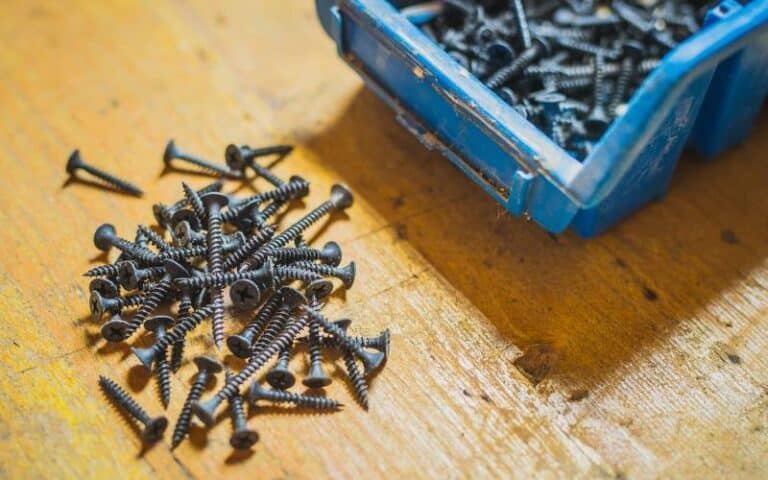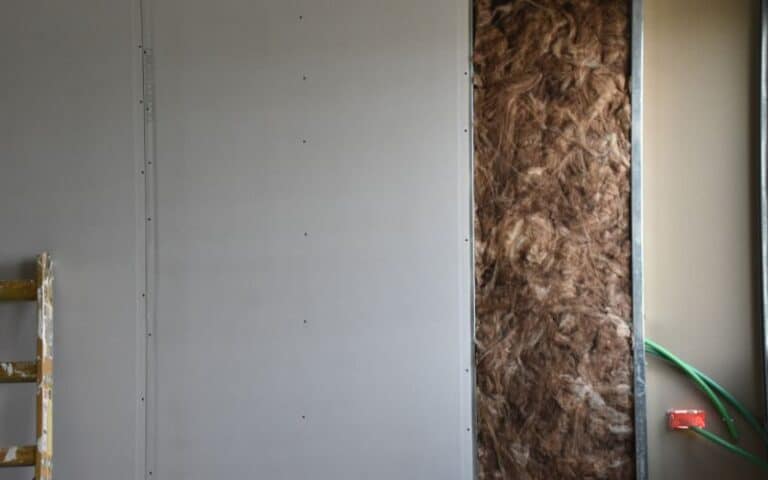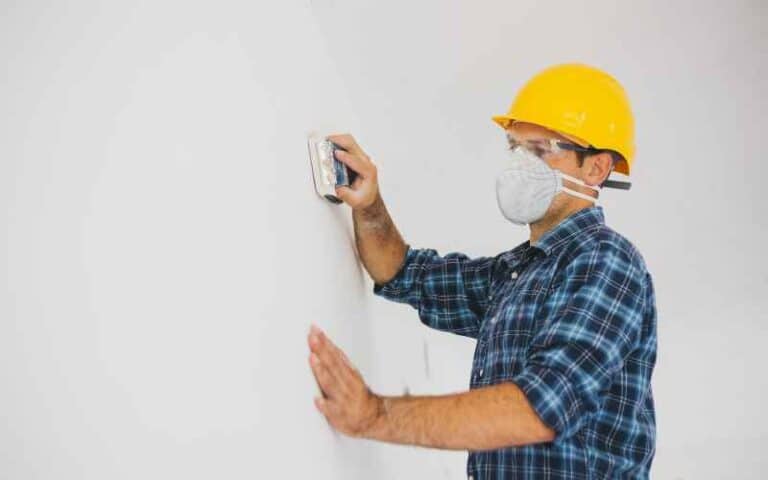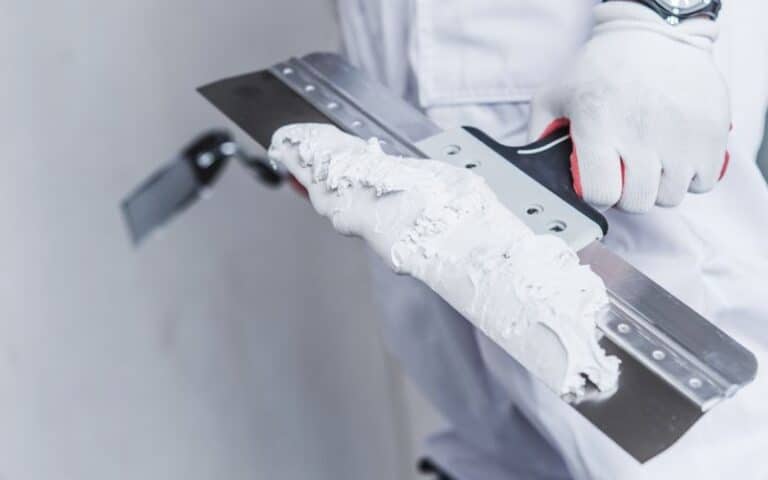Using your shower, and you notice the cracks and dents on your bathroom drywall? If yes, then you’re in the right place.
The presence of moisture in your bathroom wall can be frustrating and concerning. Moreover, moisture-related issues on your drywall can cause potential damage and mold growth.
However, it is necessary that you understand the cause and also find effective solutions to maintain your drywall structure while ensuring a healthy environment.
The drywall next to the shower getting wet is a common issue due to constant exposure of the drywalls to moisture. This issue can lead to further problems like deterioration, mold growth, and structural damage to the drywall if you don’t address it promptly. To prevent this issue, adhere to good waterproofing measures, such as installing a moisture barrier.
In this article, you will discover the signs that show that your bathroom drywall is getting wet. You will also get a good understanding of how to prevent and address this issue.
Ready for a Drywall Quiz?
How Close Should Your Shower Be to Drywall?
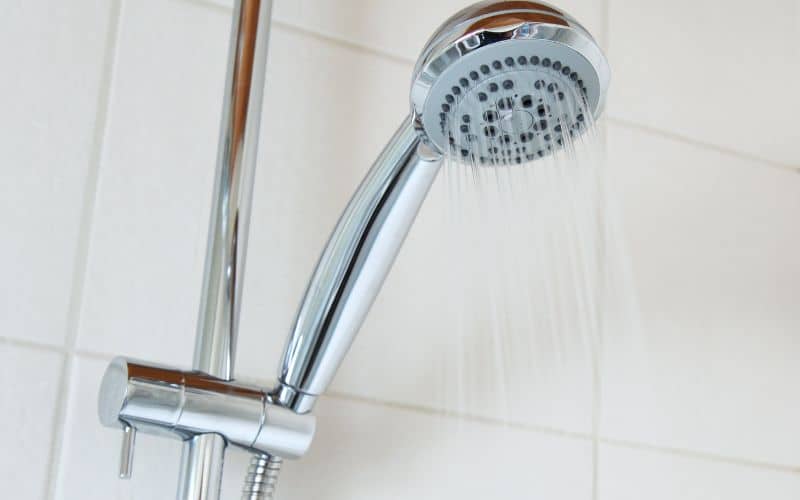
According to the National Kitchen and Bath Association (NKBA), you should leave at least 4 inches between your shower and drywall.
This space allows for better ventilation and also prevents mildew and mold growth. Also, the NKBA recommends leaving at least an inch of space between your shower and any tile.
The inch of space keeps the tile clean while preventing water from seeping into the tile. This distance is necessary to prevent water and other damage to your bathroom walls.
However, you should also consider any existing building codes in your area, as the specific guidelines may vary with location.
The placement of your shower in your bathroom also plays an important role in ensuring that your drywall is safe from moisture.
Below is a guideline to help you determine how close your shower should be to drywall:
#1. Waterproof Drywall Barrier
With a waterproofing barrier, you can easily prevent moisture damage on your drywall.
This barrier can include various materials, such as cement boards with waterproof coatings.
You can also extend the barrier beyond the shower area, creating an effective protective barrier around the drywall.
#2. Local Building Codes
Checking and confirming your local building codes and regulations is also necessary.
Some regions have varying requirements regarding the distance between the shower and drywall, including the type of waterproof materials you can use.
#3. Distance
To be safe, you should extend the waterproofing barrier about 4 to 6 inches beyond the shower area on each side.
This distance ensures the waterproof barrier effectively contains any water splash from the shower.
#4. Shower Design
Your shower design can also determine the distance between your shower and drywall. However, if your shower consists of a curb, the barrier should cover the shower floor up to the curb.
Conversely, the barrier should cover the whole shower space for a walk-in shower.
Contact a professional bathroom designer or contractor for more details on your drywall layout, building codes, and waterproofing barriers.
Is It Okay for Drywall To Get Wet From Your Shower?
It is not okay for drywall to get drywall from your shower. Wetness can cause structural damage and mildew growth.
Once you notice moisture on your drywall, you should dry it out as soon as possible. You can use a dehumidifier or manually air the bathroom to ensure ventilation.
Additionally, you should check the drywall for signs of damage, such as mold, cracks, or dents.
Regular drywall consists of gypsum, a material that absorbs water. Therefore, once the drywall comes in contact with moisture for a long time, it softens the drywall, causing deterioration.
This deterioration naturally leads to mold growth, which poses a potential health risk and damages the drywall material.
Drywall cannot withstand constant or prolonged exposure to moisture, as it is porous and can easily absorb moisture.
Moreover, moisture can cause the paint on the drywall surface to peel or blister if you paint your drywall.
To mitigate these moisture-related issues, you must take preventive measures like proper ventilation and waterproofing.
You can also inspect your bathroom regularly to check for any signs of water damage, like soft or discolored spots on the drywall.
How Wet Is Too Wet for Shower Drywall?
Various factors determine how wet is too wet for your shower drywall. If the drywall is damp to the touch, then you need to replace it.
Once you notice any moisture, it is necessary to dry out the drywall as soon as possible so it does not accumulate moisture.
Furthermore, if there are usually pools of water on the drywall, it can cause the drywall to damage quickly over time.
Apart from drying out the drywall, you should also consider the humidity levels of your environment. Humidity levels can vary depending on the climate or season.
For instance, the humidity level in your shower might be higher in summer than in winter.
Additionally, if you reside in a humid area, you need to take extra steps to control the moisture levels in your shower.
On average, the relative humidity can temporarily rise to 100% in the bathroom. Therefore, you should ventilate your bathroom before checking the constant humidity level.
Moreover, the suitable humidity for your shower should be about 30% to 60%. Once the humidity in the shower stays up longer, the moisture can condense and damage your drywall.
You can start by measuring the humidity level of your shower using a hygrometer. You can use this device to measure the moisture content in the shower.
Moreover, you can purchase a hygrometer at online stores or your local hardware store.
To measure the content of your shower, place the hygrometer at the height of your head, far from the shower head.
Let the shower run for a few minutes, and monitor the hygrometer reading to get the humidity level.
If the humidity reading is above 60%, you should take measures to reduce the moisture levels.
However, if your shower drywall is getting too wet, here are some signs you might notice:
- Drywall warping.
- Damp, mushy spots on the drywall that feel soft to the touch.
- Peeling paint and wallpaper.
- Drywall discoloration.
- Visible mold growth.
What Drywall Is Best for Showers To Resist Moisture?
The cement board is the best drywall to resist moisture in your shower.
Cement boards are water-resistant; since they do not contain paper or organic materials, they are also mold-resistant.
Though it is more costly, cement boards are very suitable for areas with frequent contact with water.
Green boards, also known as Moisture and Mold Resistant (MMR), are also popular as they contain additives that make them moisture-resistant inside and outside their surface.
Moreover, its outer surface is coated with wax to repel humidity.
Conversely, a blue board is also a great option for resisting moisture, especially where water contact frequently occurs.
It is also a great choice for areas of the shower that will have tile coverings. However, ensure to use mold-resistant tapes for the seams of the boards.
Furthermore, green boards are not waterproof; therefore, they cannot withstand long exposure to moisture.
Regardless of the drywall you choose, using a waterproofing primer in your shower drywall is essential.
These oil-based primers protect against mold and prevent moisture-related issues on your drywall.
Here is a table showing the types of moisture-resistant drywall and their moisture resistance level:
| Drywall Type | Moisture Resistance |
|---|---|
| Green Board | Moderate to High |
| Cement Board | High |
| Blue Board | Moderate to High |
| Waterproof Backer Board | Very High |
| Tile Backer Board | Very High |
What Happens When Your Drywall Gets Wet in the Shower?
When your drywall gets wet in the shower, it can be due to various issues, including mold growth, drywall swelling, and discoloration.
Drywall, popular as a gypsum board, consists of a gypsum plaster between paper layers. Though it is well-known for walls and ceilings, drywall is not necessarily moisture-resistant.
Here are more details on what happens when drywall gets wet in the shower:
#1. Drywall Swelling
Drywall is a porous material, which means it readily absorbs any form of moisture. Once you expose the drywall to high humidity levels, the outer drywall layers become saturated.
This saturation causes the drywall to swell and warp, changing its shape and structure.
#2. Mold and Mildew Growth
Bathroom environments usually provide a breeding ground for mold and mildew. The moisture in the drywall surface creates a conducive temperature and condition for mold growth.
#3. Compromised Structure
Once your drywall absorbs water and swells, the moisture can compromise the drywall’s structural integrity.
Swollen drywall becomes weaker and prone to deterioration, holes, and cracks. If the structure becomes severely unstable, the drywall can collapse.
#4. Drywall Discoloration
Moisture can cause discoloration on your drywall surface, which results in unsightly marks and dark spots. This discoloration negatively affects the aesthetic look of your bathroom.
#5. Odor
The moisture in the drywall can also lead to unpleasant odors and musty temperatures in the shower.
If you do not attend to it promptly, these issues can persist even after addressing the moisture damage.
#6. Health Issues
Though mold growth might seem harmless, these molds release spores into the air, which can cause respiratory issues and other health problems, especially for sensitive individuals.

